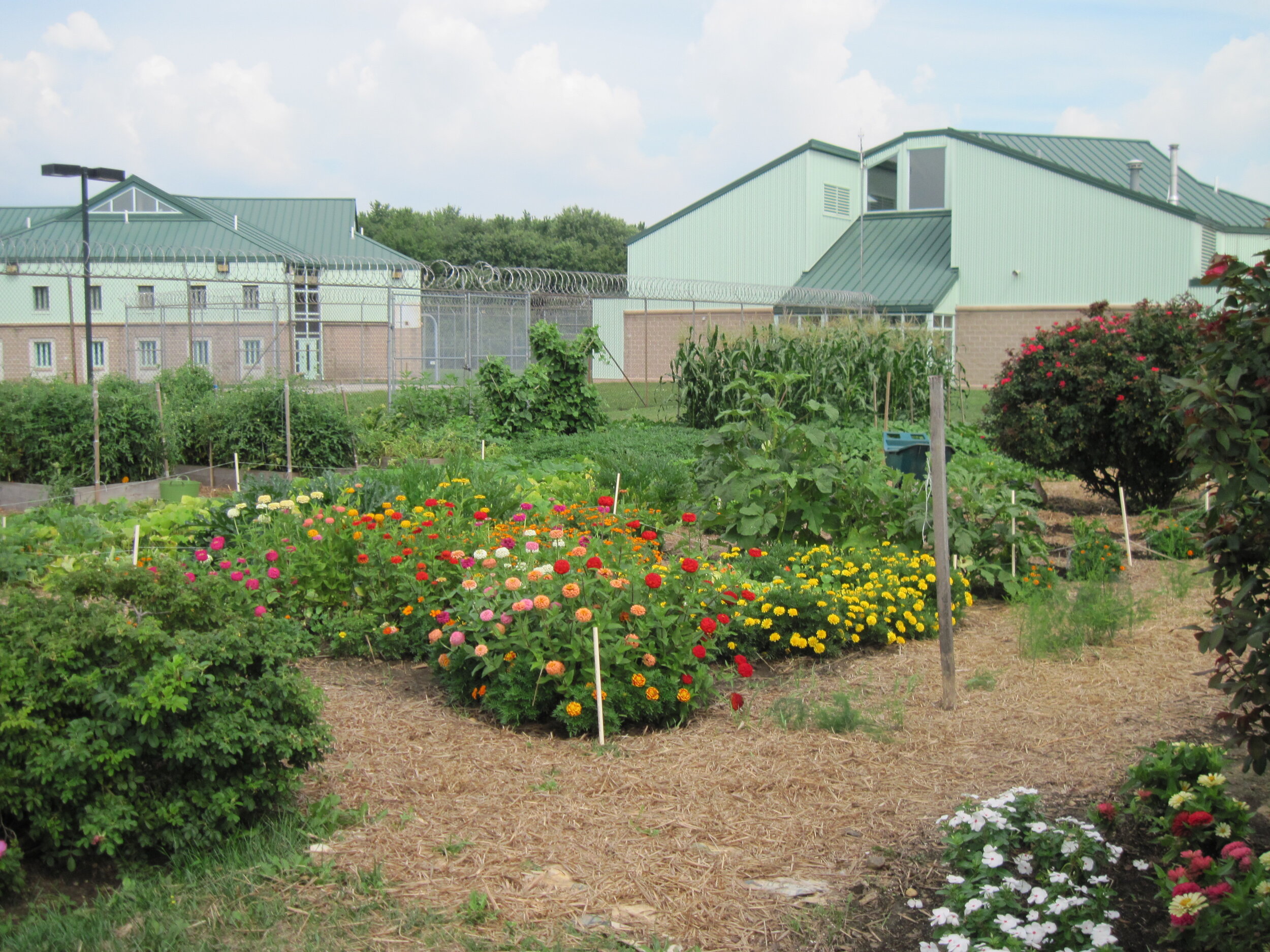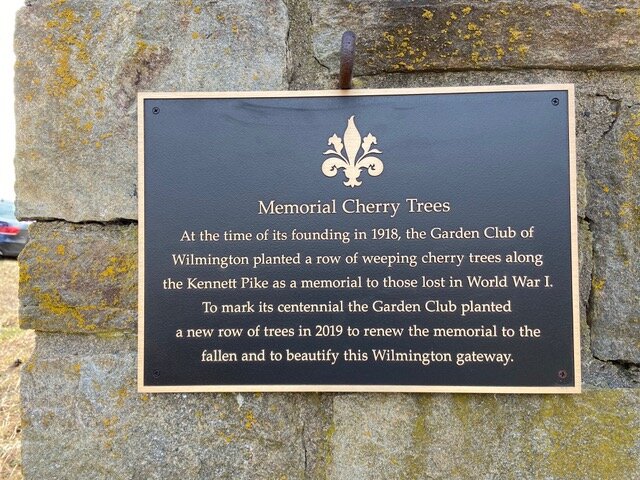2000 – to the Present
The Baylor Garden at Baylor Women’s Correctional Institution, New Castle
In 2003, the Club was looking for a new community project in which our members could actively participate. Intrigued by the suggestion of a garden at the Dolores J. Baylor Women’s Correctional Institution, our members contacted state officials and learned that not only did a garden, though languishing, exist but that it had originally been a project of The Delaware Center for Horticulture (the DCH). Our members were able to gain access because the garden was already established and because they proposed to partner with the DCH. The Club approved the project and voted initial funding. The early volunteers “jumped in with both feet,” holding a propagation workshop, two flower arranging workshops, a hot pepper jelly workshop and a Christmas greens workshop in the first year.
The vegetable garden helps supply produce for the prison’s Culinary Arts Program, which trains inmates for employment in food services and restaurants.
The garden teaches skills that could help gain employment in garden centers and public gardens. Moreover, it gets the inmates outside for fresh air and exercise. The women learn that if you put a seed in the ground, something actually does grow. They learn about patience and gain self-esteem from successes and flexibility from failures.
Because the Culinary Arts Program has been so successful, students now have little time to participate in the garden. The Baylor Garden Club is now a separate year-round educational program. It is a privilege within the prison to be part of the garden project. Only inmates with high school diplomas or GEDs may participate.
Over the years, the area under cultivation has more than doubled in size. Where once there was one raised bed there are now more than sixteen, along with a perennial garden with fruit trees and roses. Resources from two GCW funds, the Nancy McLean Memorial Fund and the Wister Fund, have made it possible to expand the program and the DCH received a grant from the Outreach Committee at Christ Church Christiana Hundred which was used to pay for a drip irrigation system installed by volunteers and inmates.
The Baylor Garden has received many accolades: winner of the DCH City Garden Contest in 2012, the DCH’s 30th Anniversary Award for “A Garden of Hope” and the Zone V Civic Improvement Award. Additionally, the Baylor Garden has been a cover story for the GCA Bulletin and was the featured Zone V project at the 2005 GCA Annual Meeting.
It is nice to note that the Baylor Gardeners have created the center pieces for the DCH’s Rare Plant Auction since 2009, an appropriate way to thank the organization that has helped the inmates so much. In addition, they created centerpieces for the Shirley Meneice Conference held at Longwood Gardens in 2018.
Pink Pearls: Centennial Restoration of Kennett Pike’s Memorial Cherry Trees
The trees, all Prunus subhirtella ‘Pendula’, Higan Cherry, will stand as a gift to the community.
The first community project undertaken by the Garden Club of Wilmington (GCW) shortly after its founding in 1918 was to plant a row of weeping cherry trees at Lower Brandywine Presbyterian Church in memory of those who died in World War I. Those trees and their spring blossoms were a landmark for many years. Over the decades, as the trees aged and failed, many were replaced by other species. In celebration of their Centennial, the members of GCW voted to replant this stretch of Kennett Pike, restoring the memorial trees to their original splendor.
The Kennett Pike was built as a toll road in the early 1800s. Pierre Samuel du Pont purchased the road in 1919, widened and paved it, and sold it to the state of Delaware for $1. When Mr. du Pont gave his wife, Alice, a pearl necklace for her birthday for the second year in a row, she proclaimed that she would rather have a “string of trees.” He happily complied, planting a 10-mile string of trees along the newly built Kennett Pike. Mrs. du Pont referred to those trees as “My Pearls.” She was a GCW member (and served as President from 1928-1930), so those trees may well have inspired the first planting of the Japanese cherry trees by GCW. Post-World War II, when development threatened the character of the Pike, Mrs. Horace K. Dugdale, Jr. assembled a group of fellow GCW members, including Mrs. David Foster and Mrs. George P. Bissell, Jr., to beautify the Pike and advocate for responsible development. Out of their efforts, the Kennett Pike Association was formed in 1957 and continues to preserve the values and beauty indigenous to the area adjacent to the Pike. Today the Kennett Pike is designated as a National Scenic Byway.
The GCW approached the Delaware Center for Horticulture (DCH) to partner in implementing this project. This was a natural collaboration, as the DCH was founded 40 years ago by the GCW and over the years has planted over 10,000 trees along the streets and highways of Delaware. The trees, all Prunus subhirtella ‘Pendula’, Higan Cherry, will stand as a gift to the community.



